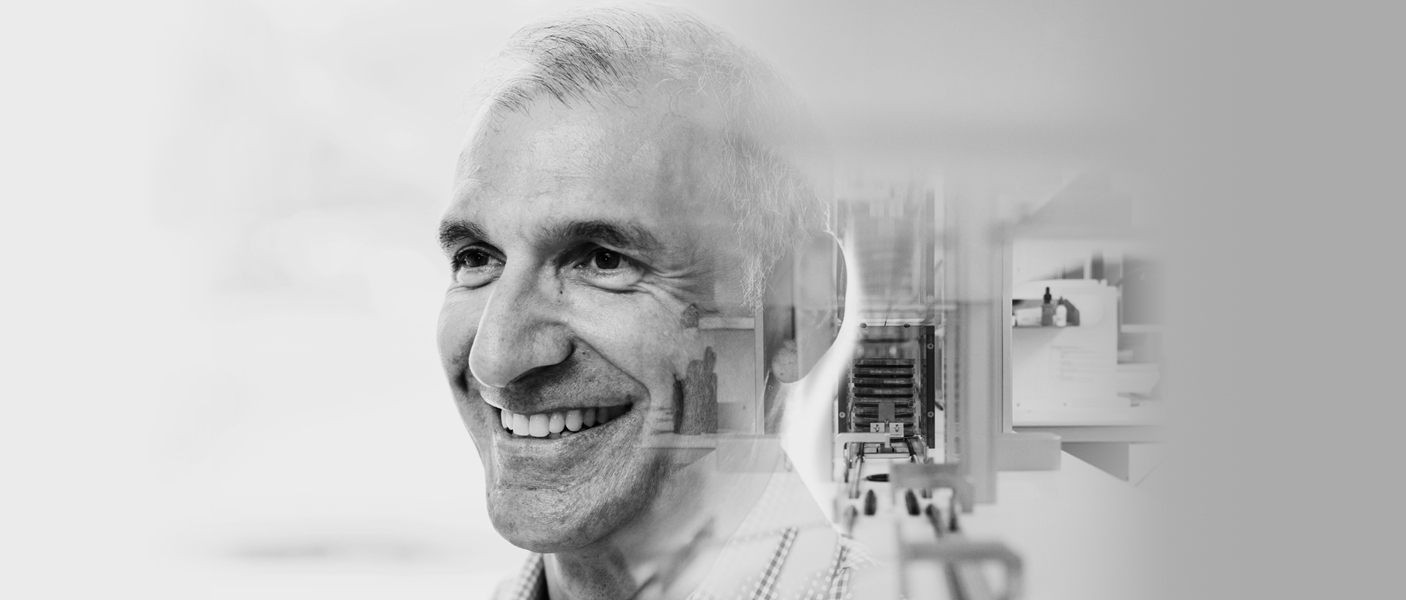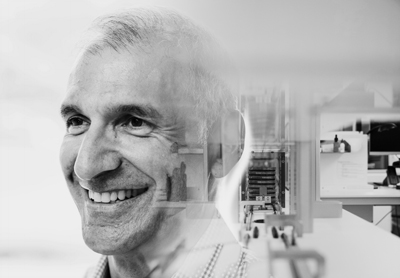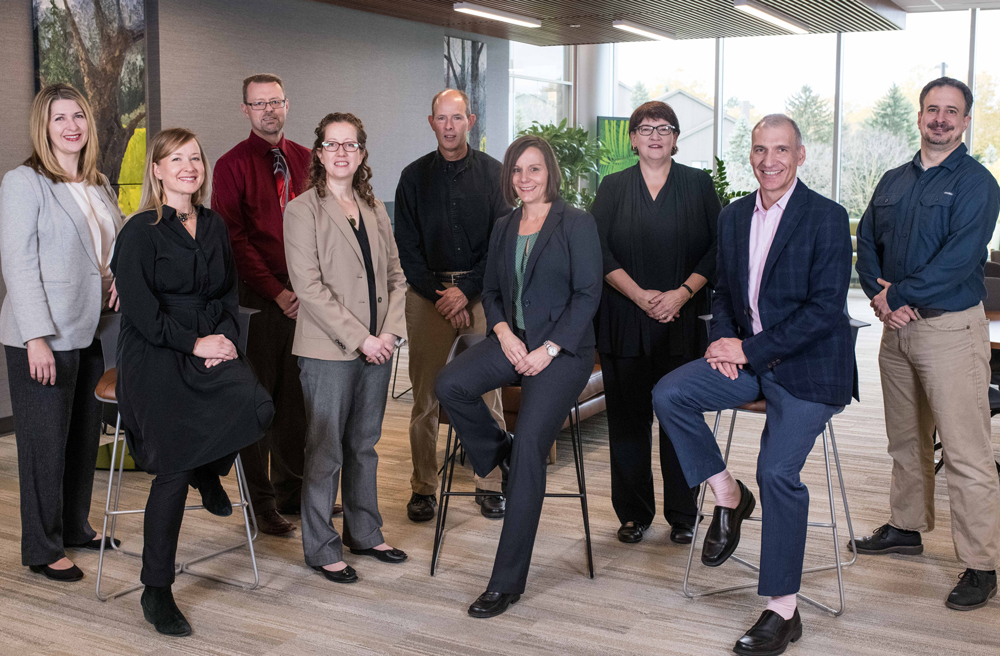


The Department of Pathology has been in its beautiful and efficient new space for [more then] ten months. Every day we learn more about the ways our work is improving due to the complex and well-thought-out design. That is the greatest success. As the clinical lead for the Pathology Renovation and Relocation (PRR) project, I have had the honor of helping to shape the future of Pathology at Michigan Medicine for the foreseeable future. Using Lean Facility Design techniques, the PRR project team facilitated the design and activation of 140,000 square feet of space at the North Campus Research Complex (NCRC), with all non-stat clinical laboratories, trainees, administration, and affiliated faculty and staff relocated over the summer of 2018. Along the way, the PRR team, of which I am a part, encountered many challenges and barriers, all of which were overcome through determination and a commitment to ensure the best possible outcomes for both patients and the department. This was a once-in-a-lifetime project for all of us and I think one of the things, in the midst of all of the challenges, that we tried to reinforce to people is that you will never have this opportunity again — to design space the way that is going to be best for the patients, the way it is going to be most efficient in accomplishing our jobs, and ultimately, provide the best level of care for our patients.
This was a once-in-a-lifetime project for all of us and I think one of the things, in the midst of all of the challenges, that we tried to reinforce to people is that you will never have this opportunity again —
Would the building be finished on time? Would we be able to get the specimens here in a timely manner and be able to track them along the way? Is our courier plan sufficiently robust? These and a myriad of other issues were at the forefront of our minds as we worked to ensure a successful relocation of the pathology laboratories to the NCRC. We spent significant amounts of time and energy to make it happen. In the end, we efficiently and safely coordinated the moves and we continue to have a very robust courier system and specimen tracking system.
To accomplish these goals, there were extensive communications and interactions between the PRR project team, the department, the campus, architects, contractors, designers, and others. We were in constant communication with them. We had regular meetings, informal face-to-face discussions, phone calls, and texts to ensure that all were on the same page, and to closely coordinate and prioritize mitigation strategies when issues were identified. In addition, the team worked closely with the department, laboratories, staff, administration, and faculty. Key to our success is that the labs were outstanding in this whole process, from leadership to staff, across the board. They excelled in organizing and articulating the validation timelines that they needed so that we could safely and efficiently coordinate the moves. The PRR team also worked closely with Metro Delivery (Ann Arbor, MI) to ensure the right schedule and the right kind of vehicles would be available to shuttle patient specimens between University Hospital and the new laboratories. Metro did a great job in accommodating all of our requests and needs. We had many unique requirements as a customer and they were very, very accommodating and helpful and made great suggestions to help us improve our processes.
 Across the department, staff have done an exceptional job in developing workflows for packaging, transporting, and tracking specimens between UH and the NCRC. Everything is happening as smoothly as possible. Everyone has done an excellent job. The Division of Quality and Healthcare Improvement (DQHI) and Pathology Informatics (PI) played a major role in this success with the development of the PathTrack asset tracking system. This critical system enables us to know where specimens are during each point in our processes.
Across the department, staff have done an exceptional job in developing workflows for packaging, transporting, and tracking specimens between UH and the NCRC. Everything is happening as smoothly as possible. Everyone has done an excellent job. The Division of Quality and Healthcare Improvement (DQHI) and Pathology Informatics (PI) played a major role in this success with the development of the PathTrack asset tracking system. This critical system enables us to know where specimens are during each point in our processes.
However, there still are challenges that have not yet been resolved. The things that have persisted are issues related to the building, and that has been a little frustrating. We are still working our way through some unanticipated issues—including adjustments and enhancements to heating and cooling as well as appropriate air-balancing and airflow. These issues were my greatest surprise in the project. The PRR Team worked hard to have success over the parts of the project for which we had direct control, but other aspects were more challenging. As it turns out, the coordination during design between the architects and engineers was not as strong as we were led to believe. This ended up causing rework and challenges during move in, some of which persist today. This was not something we anticipated or predicted, and presented a lesson the PRR team learned as we begin to tackle the next phase of the project – the UH renovation for the core labs.
Communicate often and broadly. The key takeaway from this project is that you cannot over-communicate. People hear and interpret messages in various ways. People handle change differently and as such, the messages that go out need to take different approaches to adapt to different audiences. This was a major change that had significant cultural impacts on the department. We expected that there would be an impact to our culture, but it was much more significant than we anticipated. We are working to learn from this and take that lesson into the renovation of UH, and address some of these cultural issues through communication. There is a concept from Taiichi Ohno, the father of the Toyota Production System, that states, “Having no problems is the biggest problem of all.” When “everything is fine” and remains “fine” throughout the planning process, that is an indicator that a group may not be digging deep enough and that more proactive communication is needed. Some groups are a little shyer or hesitant to share or to talk about how things are not working. So we need to be proactive in having those conversations and making sure that everyone is moving in the right direction.
The key takeaway from this project is that you cannot over-communicate.
As the UH renovation project moves forward, communication will be key to better understand challenges, to build better relationships, and to increase awareness, so that the team is not making any assumptions. That is a challenge, but also a tremendous opportunity. I appreciate the trust that the department put into me in allowing me to be in this position to help. I am proud of what we have been able to accomplish.
 ON THE COVER
ON THE COVER
Breast team reviewing a patient's slide. (From left to right) Ghassan Allo, Fellow; Laura Walters, Clinical Lecturer; Celina Kleer, Professor. See Article 2014Department Chair |

newsletter
INSIDE PATHOLOGYAbout Our NewsletterInside Pathology is an newsletter published by the Chairman's Office to bring news and updates from inside the department's research and to become familiar with those leading it. It is our hope that those who read it will enjoy hearing about those new and familiar, and perhaps help in furthering our research. CONTENTS
|
 ON THE COVER
ON THE COVER
Autopsy Technician draws blood while working in the Wayne County morgue. See Article 2016Department Chair |

newsletter
INSIDE PATHOLOGYAbout Our NewsletterInside Pathology is an newsletter published by the Chairman's Office to bring news and updates from inside the department's research and to become familiar with those leading it. It is our hope that those who read it will enjoy hearing about those new and familiar, and perhaps help in furthering our research. CONTENTS
|
 ON THE COVER
ON THE COVER
Dr. Sriram Venneti, MD, PhD and Postdoctoral Fellow, Chan Chung, PhD investigate pediatric brain cancer. See Article 2017Department Chair |

newsletter
INSIDE PATHOLOGYAbout Our NewsletterInside Pathology is an newsletter published by the Chairman's Office to bring news and updates from inside the department's research and to become familiar with those leading it. It is our hope that those who read it will enjoy hearing about those new and familiar, and perhaps help in furthering our research. CONTENTS
|
 ON THE COVER
ON THE COVER
Director of the Neuropathology Fellowship, Dr. Sandra Camelo-Piragua serves on the Patient and Family Advisory Council. 2018Department Chair |

newsletter
INSIDE PATHOLOGYAbout Our NewsletterInside Pathology is an newsletter published by the Chairman's Office to bring news and updates from inside the department's research and to become familiar with those leading it. It is our hope that those who read it will enjoy hearing about those new and familiar, and perhaps help in furthering our research. CONTENTS
|
 ON THE COVER
ON THE COVER
Residents Ashley Bradt (left) and William Perry work at a multi-headed scope in our new facility. 2019Department Chair |

newsletter
INSIDE PATHOLOGYAbout Our NewsletterInside Pathology is an newsletter published by the Chairman's Office to bring news and updates from inside the department's research and to become familiar with those leading it. It is our hope that those who read it will enjoy hearing about those new and familiar, and perhaps help in furthering our research. CONTENTS
|
 ON THE COVER
ON THE COVER
Dr. Kristine Konopka (right) instructing residents while using a multi-headed microscope. 2020Department Chair |

newsletter
INSIDE PATHOLOGYAbout Our NewsletterInside Pathology is an newsletter published by the Chairman's Office to bring news and updates from inside the department's research and to become familiar with those leading it. It is our hope that those who read it will enjoy hearing about those new and familiar, and perhaps help in furthering our research. CONTENTS
|
 ON THE COVER
ON THE COVER
Patient specimens poised for COVID-19 PCR testing. 2021Department Chair |

newsletter
INSIDE PATHOLOGYAbout Our NewsletterInside Pathology is an newsletter published by the Chairman's Office to bring news and updates from inside the department's research and to become familiar with those leading it. It is our hope that those who read it will enjoy hearing about those new and familiar, and perhaps help in furthering our research. CONTENTS
|
 ON THE COVER
ON THE COVER
Dr. Pantanowitz demonstrates using machine learning in analyzing slides. 2022Department Chair |

newsletter
INSIDE PATHOLOGYAbout Our NewsletterInside Pathology is an newsletter published by the Chairman's Office to bring news and updates from inside the department's research and to become familiar with those leading it. It is our hope that those who read it will enjoy hearing about those new and familiar, and perhaps help in furthering our research. CONTENTS
|
 ON THE COVER
ON THE COVER
(Left to Right) Drs. Angela Wu, Laura Lamps, and Maria Westerhoff. 2023Department Chair |

newsletter
INSIDE PATHOLOGYAbout Our NewsletterInside Pathology is an newsletter published by the Chairman's Office to bring news and updates from inside the department's research and to become familiar with those leading it. It is our hope that those who read it will enjoy hearing about those new and familiar, and perhaps help in furthering our research. CONTENTS
|
 ON THE COVER
ON THE COVER
Illustration representing the various machines and processing used within our labs. 2024Department Chair |

newsletter
INSIDE PATHOLOGYAbout Our NewsletterInside Pathology is an newsletter published by the Chairman's Office to bring news and updates from inside the department's research and to become familiar with those leading it. It is our hope that those who read it will enjoy hearing about those new and familiar, and perhaps help in furthering our research. CONTENTS
|
 ON THE COVER
ON THE COVER
Rendering of the D. Dan and Betty Khn Health Care Pavilion. Credit: HOK 2025Department Chair |

newsletter
INSIDE PATHOLOGYAbout Our NewsletterInside Pathology is an newsletter published by the Chairman's Office to bring news and updates from inside the department's research and to become familiar with those leading it. It is our hope that those who read it will enjoy hearing about those new and familiar, and perhaps help in furthering our research. CONTENTS
|

MLabs, established in 1985, functions as a portal to provide pathologists, hospitals. and other reference laboratories access to the faculty, staff and laboratories of the University of Michigan Health System’s Department of Pathology. MLabs is a recognized leader for advanced molecular diagnostic testing, helpful consultants and exceptional customer service.